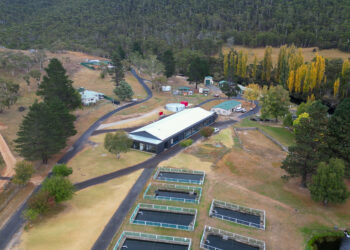
FISHERS in south-western areas of NSW are anticipating the opening of the Murray crayfish fishing season from 1st June 2016.
Murray crayfish are a freshwater crustacean found mainly in the Murray and Murrumbidgee Rivers and their tributaries.
NSW Department of Primary Industries’ (NSW DPI) Senior Fisheries Manager Cameron Westaway said environmental factors including habitat degradation and modification have led to widespread declines in populations of the Murray Crayfish, and a number of rules are in place to protect the species.
“In NSW, Murray crayfish may only be taken during the months of June, July and August in the Murray River between Hume Weir and the Tocumwal road bridge including Lake Mulwala and in the Murrumbidgee River between the Gundagai Road bridge and Berembed Weir excluding Old Man Creek,” Westaway said.
“It’s a highly anticipated time when the Murray Crayfish season opens for the winter months, and we want to ensure fishers can still enjoy the season while abiding by the rules and making sure we can sustain this species for future generations,” he said.
The minimum size limit for Murray crayfish, measured from the rear of the eye socket to the centre rear of the carapace is 10cm and the maximum size limit is 12cm. The daily bag limit for Murray Crayfish is two and the possession limit is four.
Up to five hoop or lift nets per person may be used to take Murray crayfish where permitted. The letters “HN” and user’s name, year of birth and postcode must be written on each net’s float. The taking of berried females or removing heads, tails or claws in, on, or adjacent to waters is also prohibited.
DPI director of fisheries compliance Patrick Tully said fisheries officers would be patrolling our waterways to ensure the regulatory arrangements are being followed.
“Murray crayfish cannot be taken from any waters other than during the open season in the waters prescribed. Fishers may use hoop or lift nets where they can be legally used to take yabbies in other waters, however, if any Murray crayfish are accidentally caught they must be immediately returned to the water unharmed,” Tully said.
Fishers can obtain a free Murray crayfish measuring device and the NSW Freshwater Fishing Guide from DPI Fisheries offices and most bait and tackle stores.
Detailed information on the fishing rules can be found on the NSW DPI website.
In Victoria the season will also be closing for three months from the 1st June.
“Murray crays are a slow growing crustacean so it’s really important that anglers obey catch limits to ensure the fishery remains sustainable for future generations,” said Fisheries Victoria’s Executive Director Travis Dowling.
“The minimum legal size for is 10cm and the maximum size is 12cm.
“To help anglers measure their catch accurately, free plastic measures funded by fishing licence fees, are available from Fisheries Victoria by calling the Customer Service Centre on 136 186.
“There is a daily bag limit of two Murray crays per person that applies when anglers are on or adjacent to inland waters and an absolute state-wide possession limit of four crays per person.
“Murray crays must be retained by anglers whole or in carcass form, however female crays carrying eggs or with young attached must be released immediately and unharmed.
“Up to 10 baited lines, with no hooks attached, may be used. Hoop nets are permitted too although the number depends on the waterway being fished.”
Learn more at the Victorian Fisheries website or download the free ‘Vic Fishing’ app.
Note: The Murray Regional Algal Co-ordinating Committee has advised that a red alert warning for blue-green algae is in place for the Murray River downstream of Yarrawonga Weir to Lock 9. People should not eat crayfish (or mussels) from red level warning areas until 2 weeks after blooms have dispersed.
DPI Water, WaterNSW and local water authorities will continue to monitor the algae and the remaining red alert will be lifted as soon as the high levels of algae dissipate.
















